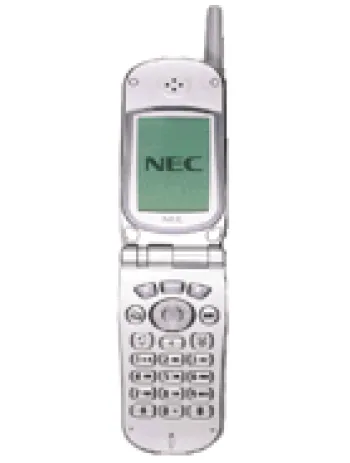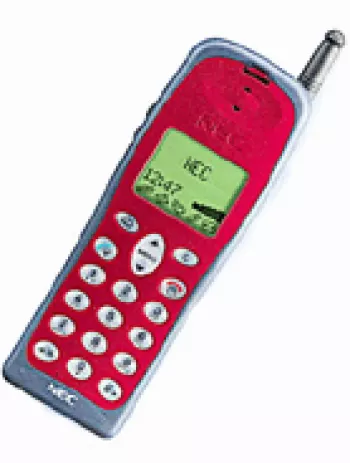
Overview of the NEC N400i
The NEC N400i, launched in March 2004, was part of a series of feature phones that served as a bridge between basic mobile phones and the upcoming smartphone era. Despite its basic functionality by today's standards, it was considered an advanced device at the time of its release, especially with its ability to access emerging mobile internet services.
Design and Build
The NEC N400i was designed with a compact and robust body, measuring 101 x 49 x 24 mm and weighing 110 g. This made it quite portable, easily fitting into pockets and small bags. The device sported a Mini-SIM slot and featured a classic candy bar design that was prevalent during that era. The phone's build quality was durable, capable of withstanding the usual wear and tear of daily use.
Display
The phone featured a 2.2-inch display, offering a resolution of 240 x 320 pixels with a pixel density of approximately 182 ppi. The screen could render 65K colors, providing a decent viewing experience for the time. Despite its modest screen-to-body ratio of around 30.3%, it was sufficient for basic tasks like browsing through contacts, sending texts, and playing java games.
Camera Capabilities
The NEC N400i was equipped with a VGA camera, featuring an LED flash to assist in low-light conditions. During that period, a camera with 0.3MP resolution was relatively common in feature phones. It also supported video recording, a sought-after feature back then, although the quality was limited by today’s standards.
Battery and Performance
Powering the N400i was a removable Li-Ion 950 mAh battery. It offered a standby time of up to 270 hours and a talk time of up to 4 hours, sufficient for daily communication needs. As a feature phone, it did not require the power demands of modern smartphones, thus making its battery life quite impressive.
Network and Connectivity
The NEC N400i supported GSM technology across three bands—900, 1800, and 1900—making it usable in various regions across the globe. It featured Class 8 GPRS for basic internet connectivity. Notably, the device lacked modern connectivity options like WLAN, Bluetooth, and GPS, relying instead on a proprietary USB connection and an infrared port for data transfer and synchronization.
Storage and Memory
Internally, the N400i came with 4MB of storage, without a card slot for expansion. This storage limitation meant users needed to be selective with the content they kept on the phone. It could store up to 500 phonebook entries and maintain records of 10 dialed, received, and missed calls each, reflecting the focus on communication-centric tasks.
Sound and Multimedia
Sound capabilities of the N400i were quite basic, with no built-in loudspeaker or 3.5mm headphone jack. However, it supported downloadable polyphonic ringtones and offered vibration alerts. The absence of advanced multimedia functionalities was typical for feature phones of its generation.
Software and Features
The device ran on a custom feature phone operating system with support for SMS, EMS, MMS, and Email. Its browser, iMode, allowed for limited web access which was groundbreaking at the time. The phone supported Java applications using DoJa 1.5, enabling users to download and use small applications and games. These capabilities distinguished it from more basic hand-held devices.
Conclusion
Though discontinued, the NEC N400i remains a testament to the transitional phase in mobile technology, from simple voice and text devices to more sophisticated hand-held computers. While technologically simple by today’s standards, it laid groundwork by introducing users to mobile internet browsing and multimedia capabilities. As a feature phone, it offered robust communication functionality in a compact and durable format.
Main Features of NEC N400i
- Compact design with dimensions: 101 x 49 x 24 mm and weight: 110 g
- 65K color display, 2.2 inches with 240 x 320 pixels resolution
- GSM technology supporting bands 900 / 1800 / 1900
- VGA main camera with LED flash and video capability
- Infrared port for wireless data exchange
- Messaging support for SMS, EMS, MMS, and Email
- iMode browser for internet access
- Java support (DoJa 1.5) with downloadable games
- Removable Li-Ion 950 mAh battery offering up to 270 hours standby and 4 hours talk time
NEC N400i Device Drawbacks
- Lacks EDGE support for faster data transfer.
- Discontinued model, with no ongoing support or updates.
- Limited internal memory of only 4MB with no card slot for expansion.
- VGA main camera is basic and lacks advanced photographic features.
- No selfie camera available for taking front-facing photos.
- No loudspeaker included for hands-free audio playback.
- Does not include a 3.5mm headphone jack.
- Missing Bluetooth and WLAN connectivity, limiting wireless features.
- Lacks positioning features like GPS.
- Proprietary USB port instead of a standard type, which could complicate connectivity.
- No built-in radio functionality.

View Also
More Phones
All Rights Reserved +14266 Phones © Mobilawy 2025

























